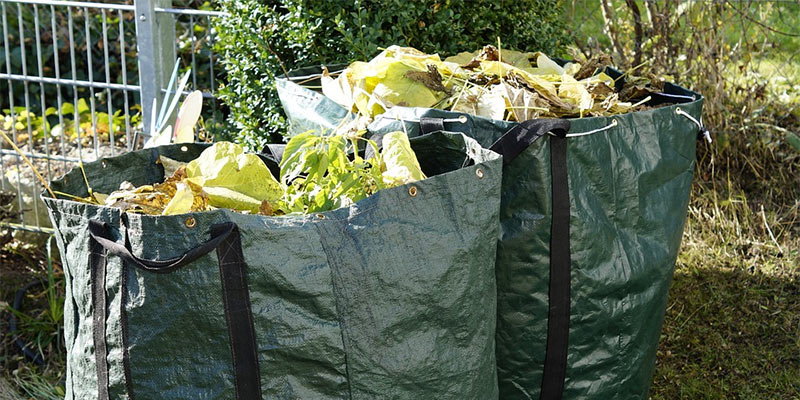
Whilst gardening is typically seen as quite an environmentally-friendly activity, the reality is that even we gardeners produce our fair share of waste. In the past much of this was either burned on a bonfire or was piled into garbage bags for landfill. These days, however, whether we’re getting rid of grass clippings or felled logs, the key is treating this waste in an efficient and planet-conscious manner. So what steps can we take?
Understanding Our Garden Waste
Most garden waste can be classified as either green or brown, which is determined by the moisture content of the waste as well as the colour of it. Green waste arises in response to grass cutting, weeding, pruning and harvesting of our vegetables. In contrast, brown waste arises when we cut down trees, trim branches and remove deadwood. To all of this, we can add organic matter produced in our households.
The following methods can be used to recycle and reuse our garden waste:
Trench Gardening
Trench gardening utilizes microbes to break down garden and kitchen waste into a nutrient- and carbon-rich substance. As well as producing rich, oil-improving compost, trench gardening can also improve the pH value of your soil and encourage the activity of earthworms.
Start by digging a trench in your vegetable garden as deep and wide as your garden spade. The soil taken out can be placed to the side, as you’ll want to re-use it later. The trench is then filled with layers of waste, starting at the bottom with small twigs, thin layers of grass clippings, leaves, vegetable cuttings and shredded cardboard.
The process continues until the trench is filled, at which point the topsoil is replaced. Over time, the layers will decompose, providing additional nutrients to your garden plants.
Composting
The first rule of composting is to ensure a 50/50 mix between green and brown waste in your bin or heap. Doing so ensures an ideal environment for the microbes that do all the hard work. Too much green waste can lead to excessive moisture, and plant material that just turns to foul-smelling mush rather than rich, swell-smelling compost. Non-vegetable waste is best avoided in your compost heap. For example, meat can spoil, smelling terrible or attracting vermin.
The speed at which plant material tends to break down is related to the temperature at which it is kept. Warmer conditions encourage more activity from microorganisms. Consequently, siting your compost bin in a sunny corner of your garden can be beneficial. The use of plastic bins, which absorb the sun’s rays, or covering your compost bin with a tarpaulin can further increase the temperature.
Alternatively, for the less patient gardener it is possible to purchase “compost activators” to kick-start the process.
Regularly inspect your compost and once it turns into a friable dark material which smells and looks like soil it is ready for use.
Shredding
Larger plant material like twigs and branches can be troublesome to compost. A great option for this tougher garden waste is to use a garden shredder to quickly chop them into much finer pieces. Many crops like cucurbits and beans can, after harvesting, also be shredded to clear the area and tall growing weeds can also be shredded in finer pieces..
Your shredded garden waste can then serve a number of different purposes. Firstly, it can be safely added to your compost heap, where it should break down far more rapidly than before. Another smart option is to use your shreddings as mulch between plants or at border edgings.
Using Large Brown Waste
Many of us have trees that require maintenance, but excess logs can be problematic to dispose of.
The first option is simply to cut the logs into lengths, then build a “woodpile” for the benefit of wildlife. Many reptiles, invertebrates and small mammals will appreciate all the potential nesting places such a construction provides.
Secondly, logs can be chopped into smaller chunks, before being used as fuel during the colder months. You’ll likely need to hire or buy suitable tools for such a procedure; a chainsaw will help to cut logs to a suitable length, while an axe or log splitter will help to split the logs open for faster drying and more efficient burning.
One final option is using a heavy duty chipper to turn unwanted logs into wood chips. Your wood chips can then be used as a mulch or on walkways in your garden, helping to retain moisture and over a period of time become part of your soil. Some gardeners with wood burning stoves even opt to burn these chippings, as they dry much more quickly than larger logs so require less seasoning.
